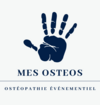Osteopathy for musculoskeletal disorders: an effective approach backed by scientific studies
Musculoskeletal disorders (MSDs) are a major health problem affecting many people, and can have a detrimental effect on their well-being and productivity at work. Osteopathy, a complementary medical approach focusing on manual treatment, is gaining in popularity as a non-invasive solution for relieving and treating MSDs.
In this article, we will explore the scientific basis of osteopathy in the management of MSDs, and the benefits this approach can offer to a company concerned with the well-being of its employees.
Musculoskeletal disorders in figures :
Here are some key figures based on reliable sources:
- Prevalence of MSDs in the workplace: According to a study by the European Agency for Safety and Health at Work (EU-OSHA), MSDs are the leading cause of work incapacity in Europe, affecting around 25% of European workers. [Source: EU-OSHA, https://osha.europa.eu/fr/themes/musculoskeletal-disorders]
- MSD-related absenteeism: According to a survey carried out by France's Institut national de recherche et de sécurité (INRS), MSDs account for around 75% of recognized occupational illnesses, making them the leading cause of absenteeism. [Source: INRS, https://www.inrs.fr/risques/maladies-muscles-os-articulations/surveillance-medecine-travail.html]
- Costs to business: MSDs entail considerable costs for companies in terms of absenteeism, medical treatment, rehabilitation and lost productivity. According to a study published in the journal Occupational and Environmental Medicine, the direct and indirect costs of MSDs represent up to 2% of gross domestic product (GDP) in developed countries. [Source: Oakley et al., 2014, https://oem.bmj.com/content/71/11/713]
It should be noted that specific figures may vary from country to country and from industry to industry. Companies are advised to consult data and studies specific to their region and industry for an accurate assessment of the impact of MSDs on their business.
Risk factors associated with MSDs

Musculoskeletal disorders (MSDs) can be caused by a combination of work-related, environmental and individual factors. Here are some of the risk factors commonly associated with MSDs:
- Repetitive activities: Performing repetitive movements without adequate recovery periods can increase the risk of MSDs. For example, tasks requiring repetitive movements of the upper limbs, such as assembly-line work, intensive use of vibrating tools or keyboarding, can contribute to the development of MSDs.
- Awkward postures: Adopting uncomfortable or prolonged working positions, such as bending forward, twisting or leaning to one side, can put excessive strain on muscles, tendons and joints, increasing the risk of MSDs.
- Physical loads: Lifting, carrying or handling heavy objects without using proper lifting and handling techniques can put excessive strain on muscles and joints, leading to MSDs.
- Vibratory stress: Exposure to vibration from tools or machines can increase the risk of MSDs, particularly in the hands and arms. Workers who regularly use vibrating tools, such as jackhammers or drills, are particularly exposed to this risk factor.
- Psychosocial factors: Psychosocial aspects of work, such as stress, high demands, lack of social support, low autonomy and reduced job satisfaction, can contribute to the development of MSDs.
- Individual factors: Certain individual factors can also increase susceptibility to MSDs, such as age, gender, history of musculoskeletal injury or disease, general physical condition and lifestyle habits.
The effectiveness of osteopathy in the treatment of RSI

The effectiveness of osteopathy in the treatment of musculoskeletal disorders (MSDs) has been studied in a number of scientific studies. Although results vary from study to study, there is promising evidence to support its use in the management of MSDs. Here's an overview of the findings and areas of application of osteopathy in the treatment of MSDs:
- Pain reduction: Numerous studies have shown that osteopathy can help reduce pain in patients suffering from a variety of MSDs, such as low-back pain, neck disorders, tendonitis and joint pain. The manual techniques used by osteopaths, such as joint manipulation, soft-tissue release and mobilization techniques, are often associated with pain reduction.
- Improved physical function: Osteopathy can help improve physical function in people with MSDs by promoting joint mobility, reducing muscle stiffness and improving coordination and balance. These improvements can help restore normal movement and reduce the functional limitations associated with MSDs.
- Posture management: Osteopaths can assess and treat postural imbalances that may contribute to MSDs. Using manual techniques and ergonomic advice, they can help correct poor posture, relieve muscle tension and promote better posture, which can reduce the load on muscles and joints.
- Holistic approach: A key feature of osteopathy is its holistic approach, which takes into account the whole body and the underlying factors that can contribute to MSDs. Osteopaths assess the patient's overall health, including medical history, lifestyle habits and structural imbalances, in order to develop a personalized, holistic treatment plan.
It is important to note that the effectiveness of osteopathy can vary depending on the specific nature of the MSD, the severity of symptoms and individual response to treatment. It is advisable to consult a qualified osteopath and discuss your specific symptoms and treatment goals to determine whether osteopathy may be beneficial in your particular case.
Scientific studies on the effectiveness of osteopathy
Several scientific studies have been carried out to assess the effectiveness of osteopathy in the treatment of musculoskeletal disorders (MSDs). Here is an overview of the results of some of these studies:
- Study published in the Journal of the American Osteopathic Association (2013): This study examined the effect of osteopathy on chronic low back pain. The researchers concluded that osteopathic sessions were associated with a significant reduction in pain and functional limitation in patients with chronic low back pain, compared with a control group receiving standard care. [Source: Licciardone et al., 2013, https://jaoa.org/article.aspx?articleid=2094602]
- Meta-analysis published in the International Journal of Osteopathic Medicine (2015): This meta-analysis analyzed the results of 14 studies investigating the efficacy of osteopathy in the treatment of RSI. The researchers found that osteopathy was associated with significant improvements in pain, physical function and quality of life in patients suffering from a variety of MSDs, such as low-back pain, neck disorders and tendonitis. [Source: Franke et al., 2015, https://www.sciencedirect.com/science/article/pii/S174606891500043X]
- Randomized controlled trial published in the British Medical Journal (2004): This study compared the efficacy of osteopathy, standard medical treatment and placebo in the treatment of low-back pain. The results showed that patients treated with osteopathy showed a more significant improvement in pain and physical function than the other groups. [Source: UK BEAM Trial Team, 2004, https://www.bmj.com/content/329/7479/1377]
These studies suggest that osteopathy can be beneficial in the management of MSDs, particularly in terms of reducing pain and improving physical function.
Osteopathy, an advantage for companies
Osteopathy can offer a number of benefits to companies in the management of musculoskeletal disorders (MSDs). By investing in health and wellness programs that include osteopathy, companies can promote employee well-being and improve productivity. Here are some specific benefits for companies:
- Reduced absenteeism: MSDs are one of the main causes of absenteeism in the workplace. By offering osteopathic treatment to employees, companies can help reduce absenteeism linked to MSDs, by helping employees to manage and prevent these disorders. Studies have shown that osteopathy can reduce pain and improve physical function, which can enable employees to return to work more quickly and reduce prolonged periods of absence.
- Improved productivity: MSDs can lead to reduced productivity at work due to the pain, functional limitations and discomfort experienced by employees. By treating MSDs with osteopathy, employees can regain better mobility, reduce pain and improve their ability to perform their work tasks. This can lead to an increase in overall productivity and a better quality of work.
- Injury prevention: By integrating osteopathy into occupational health and safety programs, companies can help prevent MSD-related injuries. Osteopaths can assess employees' postures and movements, identify risk factors and recommend ergonomic adjustments to reduce stress on the body. This can help create a safer working environment and reduce the risk of MSD-related injuries.
- Improved employee satisfaction: By offering osteopathic care, companies demonstrate their commitment to their employees' well-being. This can foster greater job satisfaction, strengthen employee loyalty to the company and help create a positive working environment. Employees feel cared for and appreciated, which can improve their commitment and motivation.
It is important for companies to promote a culture of health and well-being by integrating osteopathy into their employee support programs. This can be achieved by partnering with local osteopaths, providing information on the benefits of osteopathy and encouraging employees to use these services for the prevention and treatment of MSDs.
Conclusion on MSDs and osteopathy
Osteopathy is a promising and effective approach to the treatment of musculoskeletal disorders. Scientific studies have demonstrated its effectiveness in reducing pain and improving physical function. For companies, osteopathy can offer many benefits, including reducing absenteeism, improving productivity and promoting employee well-being. By integrating osteopathy into workplace health and wellness programs, companies can invest in their employees' health and create an environment conducive to performance and job satisfaction. It is essential to promote an evidence-based approach and raise awareness of the importance of osteopathy in the management of MSDs, in order to foster better health and quality of life for all.
Corporate events

If you would like one or more osteopathic interventions in your company, visit the MES OSTEOS website, where a team of professional osteopaths will be at your service.
Marie Messager
Osteopath D.O
2 rue Alexis de Tocqueville
78000 Versailles

